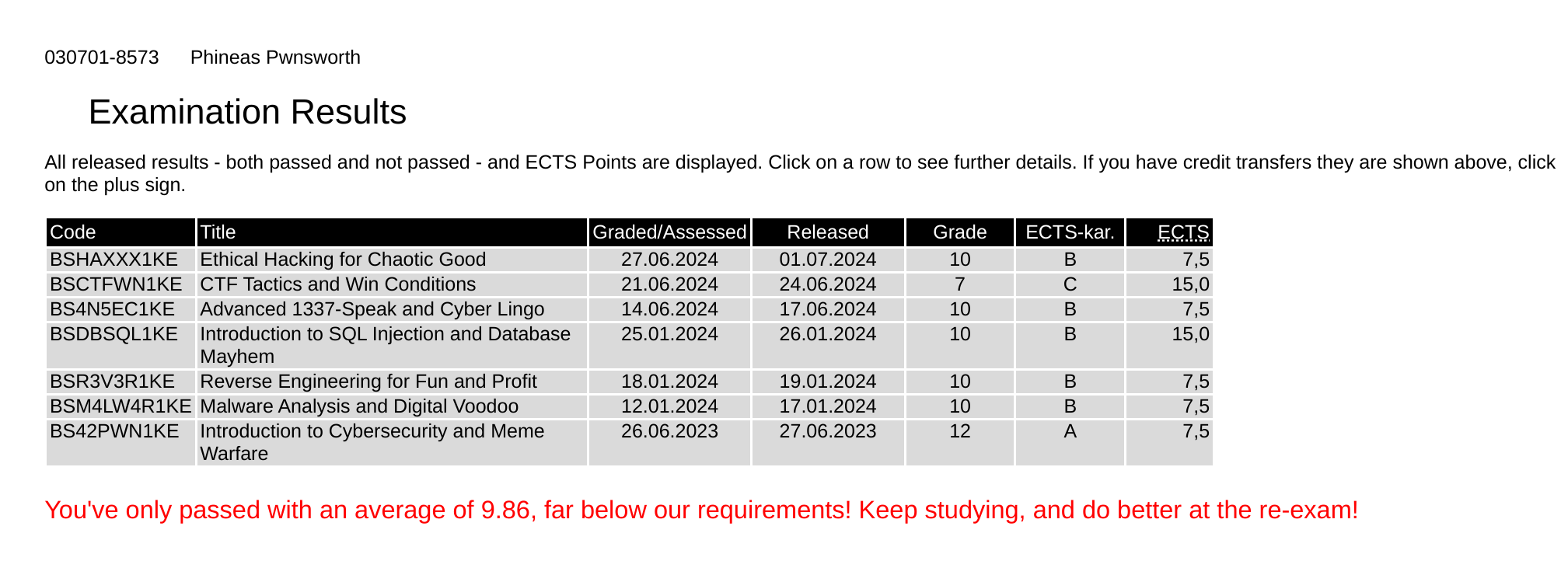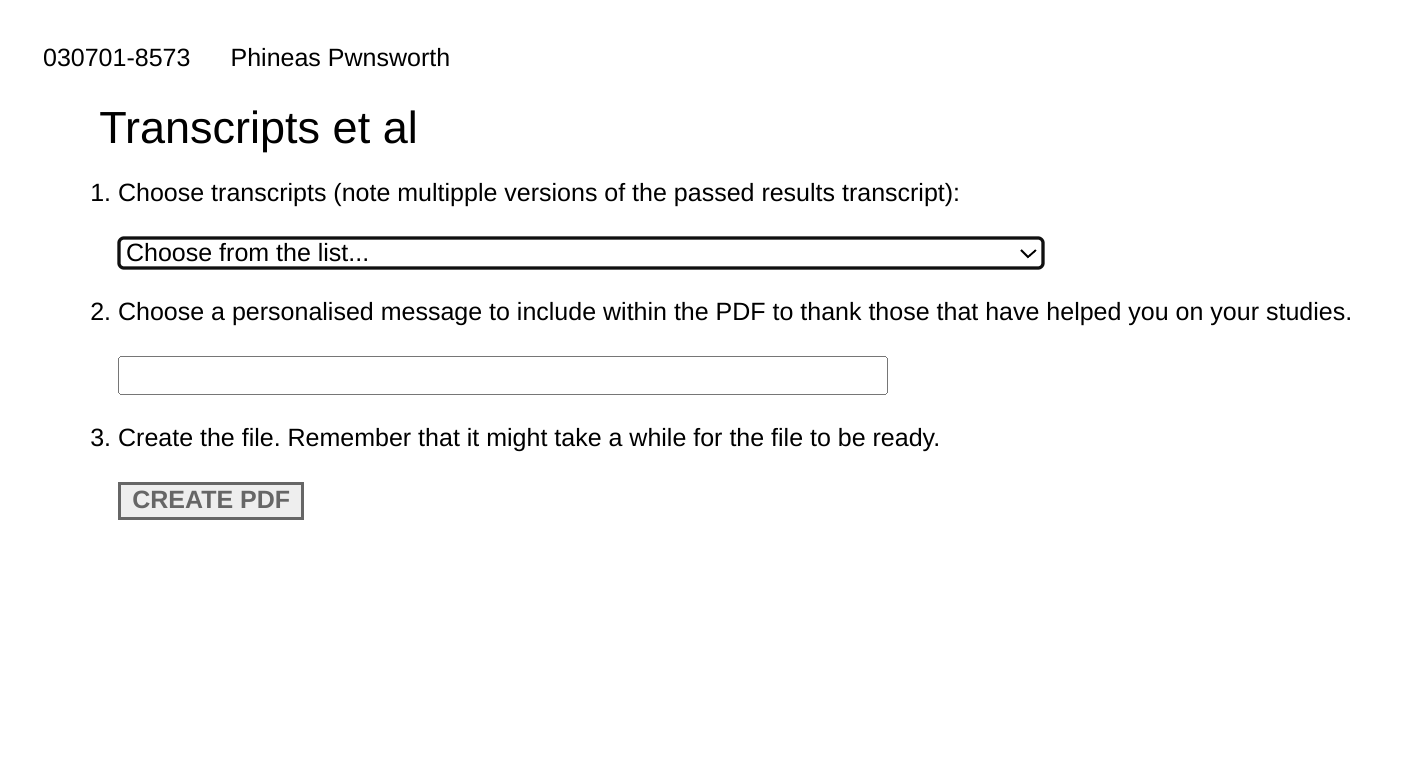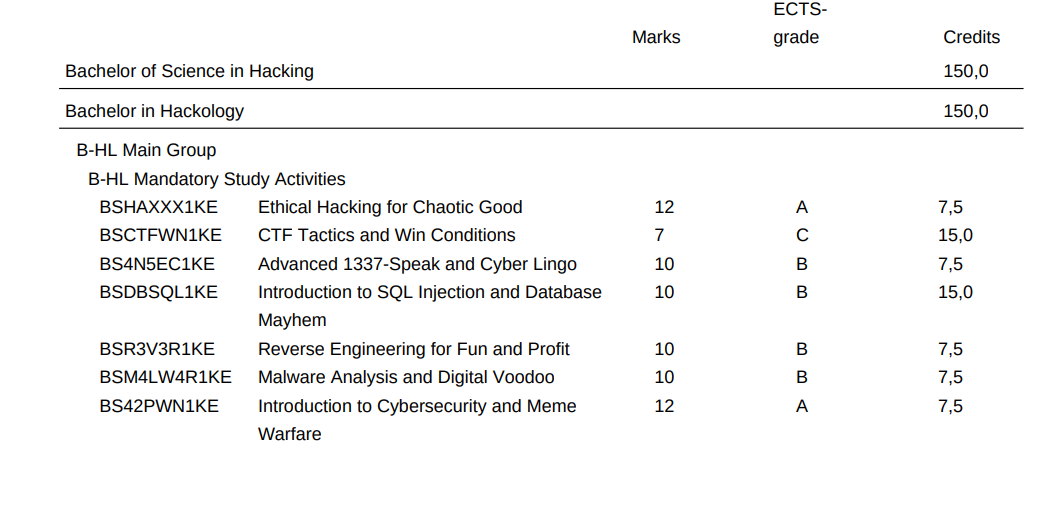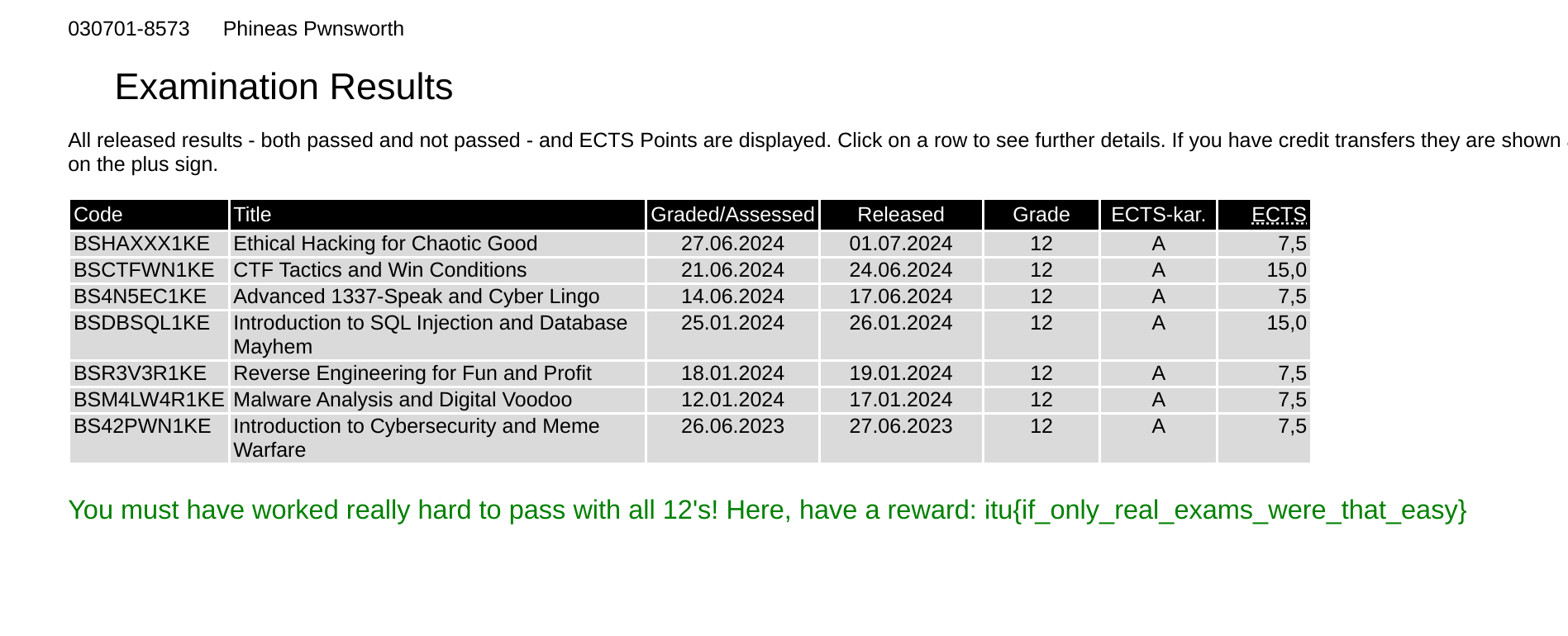3 - Grades
Suggested difficulty: normal
The semester has come to a brutal end, and the results are in. You log in to the Intrusion Technics University (ITU) study management platform, My Study Activities to check your exam results. ITU is known for its unforgivingly high exam standards, and it seems your modest performance didn’t make the cut.
The means disappointed looks from friends and family, your future plans practically in shambles, and worst of all: the dreaded re-exam. But you’re not ready to give up just yet! Setbacks are just opportunities in disguise, right? Somewhere in the depths of the university’s labyrinthine digital infrastructure, there has to be a way forward. You just need to find it.
On the challenge we are greeted by a university grade platform. Going into “examination results” we see a message indicating that we need to get a much higher grade point average.

From the message we can assume that we are somehow meant to increase our GPA to acceptable levels.
Exploring the site further, we find a page where you can print a PDF of your examination results:

Most of the options in the dropdown don’t work, but the one titled “BestÃ¥ede resultater for igangværende uddannelser” does.
In addition to this, there’s a text field for user input.
Clicking the CREATE PDF button generates a PDF file in the browser, with the user input in the PDF. Interestingly, in the bottom of the PDF we see the text “Created with love by pdfkit 0.8.6”.
Googling “pdfkit 0.8.6 vulnerabilities” shows that this specific version of pdfkit is vulnerable to command injection. In particular is a Snyk article that shows that using the string
%20`sleep 5`causes the sleep 5 command to get injected and ran by the program. And sure
enough, entering the above into the text field and clicking the button causes it
site to hang for 5 seconds!
We can push this further: the output of the command is visible in the PDF, so
using a command like ls we can see 2 files in the current directory:
grades.csv and set_grade.sh. Very suspicious. We can see using
cat grades.csv that it’s a csv file that contains two columns, subject IDs
and grades:
subject,grade
BSHAXXX1KE,10
BSCTFWN1KE,7
BS4N5EC1KE,10
BSDBSQL1KE,10
BSR3V3R1KE,10
BSM4LW4R1KE,10
BS42PWN1KE,12The set_grade.sh script seems useful. cating it we see that it takes a
subject ID and a grade, and seemingly modifies the CSV file somehow?
#!/bin/sh
# Function to print help information
usage() {
echo "Sets the grade for a course"
echo "ONLY FOR USE BY PROFESSORS"
echo "Usage: $0 <ID> <NUMBER>"
echo " <ID>: A course identifier"
echo " <GRADE>: A grade"
exit 1
}
# Check if exactly two arguments are provided
if [ "$#" -ne 2 ]; then
usage
fi
ID="$1"
GRADE="$2"
grades_file="grades.csv"
found=0
awk -F, -v lookup="$ID" -v newval="$GRADE" -v found_ref="$found" 'BEGIN {OFS=","}
$1 == lookup { $2 = newval; found_ref=1 }
{ print }
END { if (found_ref == 0) exit 1 }' "$grades_file" >temp.csv
if [ $? -eq 1 ]; then
echo "Error: Course '$ID' not found in '$grades_file'." >&2
rm temp.csv
exit 1
fi
echo "Grade for course '$ID' set to '$GRADE'."
mv temp.csv "$grades_file"Let’s try setting the grade of the first subject to 12, the highest grade in the Danish education system:
> ./set_grade.sh BSHAXXX1KE 12Once we’ve done this, we can already see the result in the PDF file! The subject grade has been updated to 12!

Let’s do this to all the grades. After doing it, we go back to the results page and we got the flag!


